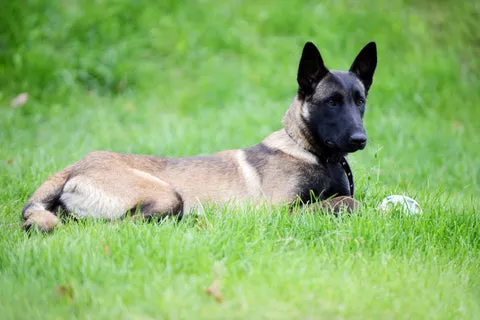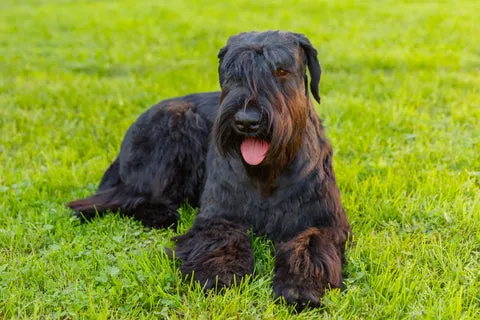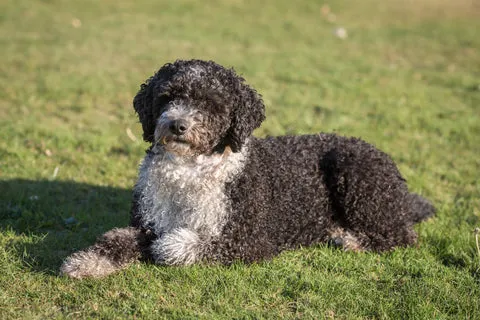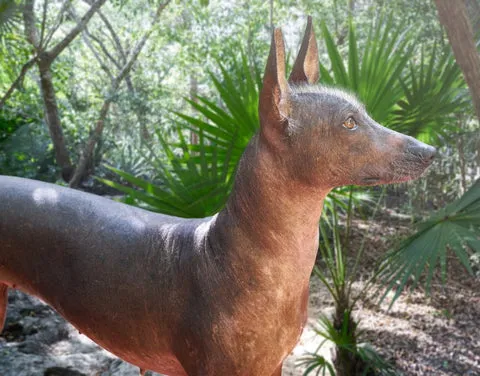The German Shepherd Dog (GSD) stands as one of the most iconic and beloved canine companions worldwide. Renowned for their intelligence, loyalty, courage, and versatility, these magnificent dogs are often sought after for their protective nature, trainability, and striking appearance. However, for many prospective owners, one significant concern frequently arises: shedding. The idea of a “German Shepherd that doesn’t shed” is a popular one, particularly for individuals with allergies or those who simply prefer a cleaner home environment. This article aims to cut through the myths, reveal the truth about German Shepherd shedding, and explore excellent low-shedding alternatives that embody many of the GSD’s most admired traits, including large hypoallergenic, non-shedding dogs.
The Reality of German Shepherd Shedding: What You Need to Know
For anyone considering a German Shepherd, understanding their coat type and shedding patterns is crucial. It’s a significant aspect of living with this breed and directly impacts whether they are a suitable choice for your lifestyle.
Understanding the German Shepherd’s Double Coat
German Shepherds possess a dense double coat, a characteristic feature that contributes to their iconic appearance and serves vital functions. This coat consists of two layers:
- An Outer Coat: This layer is typically straight, dense, and close-lying, providing protection against dirt, water, and harsh weather conditions. It’s tough and resilient.
- An Undercoat: Soft, thick, and woolly, the undercoat acts as an insulating layer, keeping the dog warm in cold temperatures and cool in hot climates by trapping air.
This robust double coat is essential for a working dog like the German Shepherd, which was originally bred for herding and required protection from the elements.
“Blowing Coat” and Seasonal Shedding
German Shepherds are notorious for their shedding, and this is largely due to their double coat. They shed year-round, but experience two significant periods of heavy shedding, often referred to as “blowing their coat,” usually in spring and autumn. During these times, they shed their entire undercoat to prepare for the upcoming change in season. This process can be quite extensive, resulting in large amounts of loose hair around the home.
Even outside of these seasonal “blowouts,” German Shepherds shed consistently. Owners often find dog hair on furniture, clothing, and floors. For those with sensitivities, this constant shedding can distribute dander, a common allergen found in dog skin cells and saliva, throughout the environment, potentially triggering allergic reactions. Managing this requires regular grooming, which we will touch on later, but it’s important to set realistic expectations.
Are German Shepherds Hypoallergenic?
The short answer is unequivocally no. Purebred German Shepherds are not considered hypoallergenic. The term “hypoallergenic” generally refers to breeds that produce less dander (microscopic flakes of skin), shed less hair, and consequently release fewer allergens into the environment. Since German Shepherds shed profusely and produce a normal amount of dander, they are not suitable for individuals with dog allergies.
Any claims of a “hypoallergenic German Shepherd” are generally misleading. While no dog is 100% hypoallergenic, some breeds are certainly better suited for allergy sufferers due to their coat type and minimal shedding. Unfortunately, the German Shepherd does not fall into this category.
The Myth of “German Shepherd Breeds That Don’t Shed”
The desire for a non-shedding German Shepherd is understandable given their many positive attributes. However, it’s a desire rooted in a myth. There are no purebred German Shepherd variations, lines, or “breeds” that inherently do not shed. Every purebred German Shepherd, regardless of coat length (short, medium, or long-haired, though long-haired GSDs also shed heavily), will shed due to their double coat structure.
Beware of breeders or individuals making claims about “non-shedding German Shepherds.” These statements are often inaccurate and can lead to disappointment and potential rehoming if an allergy sufferer acquires such a dog based on false promises. Understanding the characteristics of dog breeds with shepherd in the name is important, as some shepherd-type dogs may have different coat types, but a true German Shepherd will always shed. Even if you’re looking into German Shepherd puppy prices in India, be prepared for the reality of their coat maintenance.
German Shepherd Mixes: A Potential (But Unpredictable) Solution?
While a purebred non-shedding German Shepherd is a fantasy, some people explore German Shepherd mixes with breeds known for their low-shedding coats. This approach offers a possibility, but it comes with significant caveats and unpredictability.
The Concept of Hybrid Vigor and Coat Unpredictability
When two different breeds are crossed, the genetic outcome for coat type (and temperament, size, health) can be highly variable. This is where “hybrid vigor” comes into play – the offspring might inherit desirable traits from both parents, but there’s no guarantee which traits will manifest. A puppy in a German Shepherd mix litter might inherit more of the GSD’s shedding double coat, while another might get more of the low-shedding parent’s coat. This makes predicting the shedding level of a mixed-breed dog very difficult.
Popular GSD Mixes with Low-Shedding Breeds (and their caveats)
If you’re set on a GSD-like dog with a reduced shedding coat, considering a mix might offer a chance, but always proceed with caution and realistic expectations.
- Shepadoodle (German Shepherd Poodle Mix):
- Potential: The Poodle is renowned for its low-shedding, curly coat, making the Shepadoodle one of the most popular GSD mixes for allergy sufferers. If a Shepadoodle inherits more of the Poodle’s coat genetics, it can be quite low-shedding.
- Caveats: The coat can vary wildly from straight and GSD-like to curly and Poodle-like, or anything in between. Grooming can be high-maintenance, as the Poodle coat requires regular brushing and professional trimming to prevent matting. Temperament can also be a blend, often resulting in a highly intelligent and active dog.
- German Shepherd Airedale Terrier Mix:
- Potential: The Airedale Terrier has a wiry, low-shedding coat that requires stripping or regular clipping. Combining this with a GSD could potentially result in a dog with a tougher, less shedding coat than a purebred GSD.
- Caveats: Again, coat type is unpredictable. Airedales are also high-energy and intelligent, so this mix would likely be best for experienced owners who can provide consistent training and exercise.
- German Shepherd Portuguese Water Dog Mix:
- Potential: Portuguese Water Dogs are known for their curly, waterproof, single coats that shed minimally. A mix could produce a highly intelligent, energetic dog with a wavy or curly coat that sheds less than a GSD.
- Caveats: This mix would likely be very active and demand significant mental and physical stimulation. Their grooming needs would also be higher than a GSD’s, requiring regular brushing to prevent matting.
What to Consider When Looking at GSD Mixes
If you decide to pursue a GSD mix for its potential low-shedding qualities:
- Meet the Parents: Ideally, you should meet both parent dogs to get an idea of their temperament and coat types.
- Observe the Puppies: Even within the same litter, puppies can have different coat types. Spend time with the puppies and observe their individual coats.
- Understand Grooming Needs: A low-shedding coat often means higher grooming demands, such as regular brushing, trimming, or professional grooming.
- Temperament: Remember that a mix inherits traits from both sides. Be prepared for a blend of temperaments, which can be less predictable than a purebred dog.
Top Low-Shedding Dog Breeds Similar to German Shepherds
For those who love the German Shepherd’s qualities—intelligence, loyalty, protective instincts, and impressive size—but need a low-shedding companion, there are several excellent purebred alternatives. These breeds often share many of the GSD’s admirable traits without the heavy shedding.
Belgian Malinois
 Belgian Malinois standing alert in a grassy field, resembling a German Shepherd with a shorter, low-shedding coat
Belgian Malinois standing alert in a grassy field, resembling a German Shepherd with a shorter, low-shedding coat
Often mistaken for German Shepherds, Belgian Malinois are incredibly intelligent, athletic, and loyal dogs. They share the GSD’s brave demeanor and well-muscled physique, often serving in police and military roles. Crucially, Malinois possess a short, straight coat that sheds minimally, making them a much better option for individuals concerned about dog hair and dander. They also tend to drool less than many other large breeds. However, their high energy levels and intense drive mean they are best suited for experienced owners who can provide extensive training and exercise.
Giant Schnauzer
 Alert black Giant Schnauzer with cropped ears, showcasing its dense, wiry, low-shedding coat
Alert black Giant Schnauzer with cropped ears, showcasing its dense, wiry, low-shedding coat
The Giant Schnauzer is a formidable and intelligent breed, known for its protective nature and devotion to its family. They are larger than standard schnauzers, standing over two feet tall and weighing 55-85 pounds. Their dense, wiry, weather-resistant double coat is low-shedding, but requires regular stripping and brushing to maintain its health and appearance. Giant Schnauzers are excellent guard dogs and can be very loyal companions. They need consistent training and moderate daily exercise to thrive. Proper socialization from puppyhood is vital to prevent territorial tendencies.
Bouvier des Flandres
The Bouvier des Flandres is a calm, protective, and powerful dog with a rugged appearance. Originally bred as farm dogs for herding cattle, they are loyal and courageous. Standing slightly over two feet tall and weighing 70-100 pounds, they are substantial dogs. Their thick, long coat sheds at a low rate, but this doesn’t mean low maintenance. Bouviers require significant grooming, including frequent brushing and regular trimming (multiple times a year) to prevent matting and keep their coat healthy. Their dense coat can also be challenging to rinse thoroughly after bathing.
Airedale Terrier
Often called the “King of Terriers,” the Airedale is the largest of the terrier breeds, known for its intelligence, bravery, and versatile nature. They are loyal and protective, displaying a dignified demeanor. Airedales possess a wiry, dense coat that sheds minimally, making them a good choice for those seeking a low-shedding dog. Their coat does require regular grooming, including brushing and hand-stripping or clipping, to keep it in good condition. Like German Shepherds, Airedales are active and intelligent, requiring consistent training and plenty of exercise.
Standard Poodle
 Majestic Standard Poodle with its signature curly, low-shedding coat, looking elegant
Majestic Standard Poodle with its signature curly, low-shedding coat, looking elegant
Often stereotyped as dainty, the Standard Poodle is, in fact, an athletic, highly intelligent, and robust dog. They are among the smartest of all dog breeds and excel in various dog sports and activities. Standing about a foot and a half tall and weighing 40-70 pounds, they are substantial in size. Their signature curly coat is renowned for being very light-shedding, making them an excellent choice for allergy sufferers. However, their coat requires consistent and frequent grooming, including daily brushing and professional clipping every 4-6 weeks, to prevent matting. Standard Poodles are energetic and need consistent exercise and mental stimulation.
Portuguese Water Dog
 Energetic Portuguese Water Dog with a curly, waterproof coat splashing in water
Energetic Portuguese Water Dog with a curly, waterproof coat splashing in water
As their name suggests, Portuguese Water Dogs were originally bred to assist fishermen, making them strong swimmers and active companions. They are highly intelligent, energetic, and eager to please, making them relatively easy to train. Portuguese Water Dogs stand just under two feet tall and weigh 40-60 pounds. Their medium-sized bodies are covered in a curly or wavy, waterproof coat that rarely sheds. While low-shedding, their coats require regular and extensive grooming, including frequent brushing and professional trimming, to prevent matting. They need ample exercise to match their energetic and playful demeanor.
Spanish Water Dog
 Spanish Water Dog with distinctive corded or curly coat looking attentive
Spanish Water Dog with distinctive corded or curly coat looking attentive
Similar to the Portuguese Water Dog, the Spanish Water Dog is skilled in the water and possesses a unique curly, often corded, coat that is low-shedding. They stand under two feet tall and weigh around 30-50 pounds. A key grooming principle for the Spanish Water Dog is that their coat should be kept the same length all over and never brushed (if corded). Instead, it should be trimmed a few times a year. These dogs have a high level of energy and require moderate to extensive daily exercise, making them great companions for long hikes or runs. They are intelligent, loyal, and make good family dogs.
Xoloitzcuintli (Xolo) – Standard Variety
 Hairless Xoloitzcuintli dog breed with smooth skin and distinctive ancient appearance
Hairless Xoloitzcuintli dog breed with smooth skin and distinctive ancient appearance
The Xoloitzcuintli, or Xolo for short, is an ancient breed from Mexico, known as the “ancient Aztec dog of the gods.” They come in three sizes, with the Standard Xolo reaching close to two feet tall and weighing 30-55 pounds. Xolos are primarily known for their hairless coats, which are smooth and tough, making them an excellent choice for people with dog allergies who want a low-maintenance grooming routine. They require minimal brushing, though skin care (sunscreen, moisturizing) is necessary. Xolos are friendly, loving companions, usually restful around the house but requiring lots of physical activity. They are loyal and protective of their families.
Essential Grooming and Care for Low-Shedding Dogs
Even though these breeds shed minimally, “low-shedding” does not equate to “no maintenance.” In many cases, it means a different type of maintenance.
- Regular Brushing: Many low-shedding breeds (especially those with curly or long coats) require frequent brushing to prevent matting and remove dead hair that gets trapped in the coat. This trapped hair is what makes them “low-shedding” in terms of release into the environment, but it still needs to be removed.
- Professional Grooming: Breeds like Poodles, Portuguese Water Dogs, and Airedales often need professional grooming, including clipping or stripping, every few weeks or months. This is crucial for maintaining coat health and preventing skin issues.
- Bathing: Regular bathing helps keep their coats clean and skin healthy. Ensure you use appropriate dog-specific shampoos and conditioners.
- Diet and Overall Health: A balanced, high-quality diet plays a significant role in coat health, regardless of shedding level. Good nutrition can contribute to a healthier coat and skin, potentially reducing even minimal shedding. Regular veterinary check-ups also ensure underlying health issues aren’t contributing to unusual hair loss.
- Exercise and Mental Stimulation: Most dogs on this list, similar to German Shepherds, are intelligent, active breeds. They thrive on regular exercise and mental engagement. A well-exercised and stimulated dog is generally a happier and healthier companion. This is a contrast to considering small non-shedding family dogs which might have different exercise needs.
Conclusion
The quest for a “German Shepherd that doesn’t shed” often stems from a deep admiration for the breed coupled with a practical need for a low-allergen or low-mess pet. While the truth is that purebred German Shepherds are significant shedders and not hypoallergenic, hope is not lost for GSD enthusiasts with allergies or those seeking a cleaner home.
By understanding the realities of GSD coats and exploring carefully chosen German Shepherd mixes (with awareness of their unpredictable outcomes), or by turning to exceptional low-shedding breeds that share the GSD’s desirable traits like intelligence, loyalty, and protective instincts, you can find a compatible canine companion. Breeds such as the Belgian Malinois, Giant Schnauzer, Bouvier des Flandres, Airedale Terrier, Standard Poodle, Portuguese Water Dog, Spanish Water Dog, and the hairless Xoloitzcuintli offer fantastic alternatives, each with unique charm and manageable shedding.
Choosing the right dog involves thorough research into breed characteristics, temperament, grooming requirements, and exercise needs. Prioritize responsible breeders and, whenever possible, meet the specific dog or puppy to assess their individual coat and personality. With the right information, you’ll be well-equipped to welcome a devoted, low-shedding friend into your home, whether you’re looking for best dog breeds for homes in general or for specific environments. Your ideal canine partner is out there, ready to bring joy without the overwhelming shedding woes.
